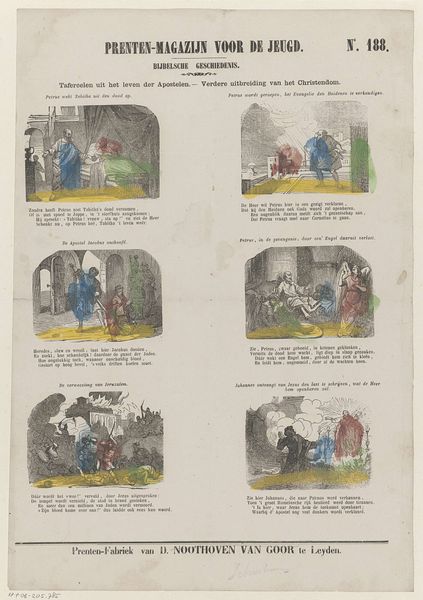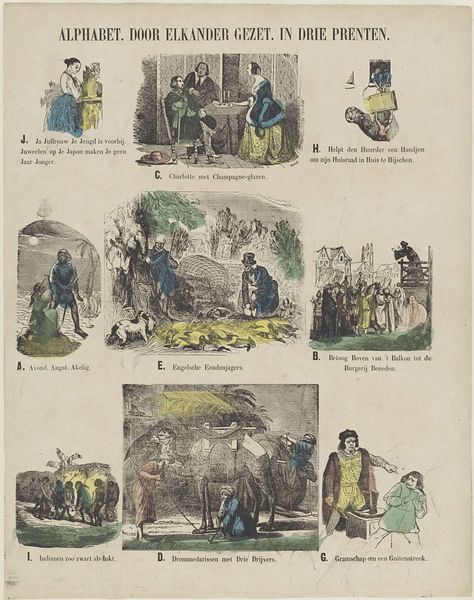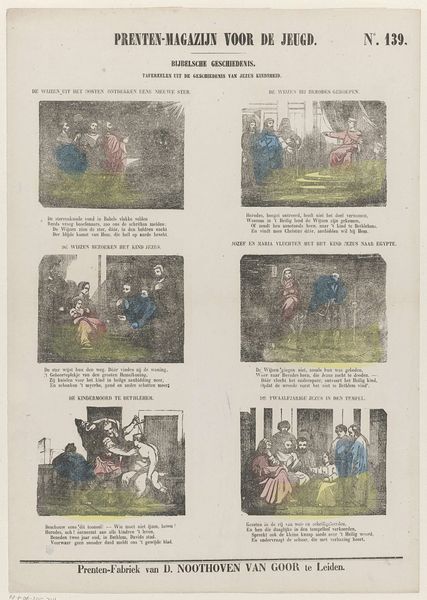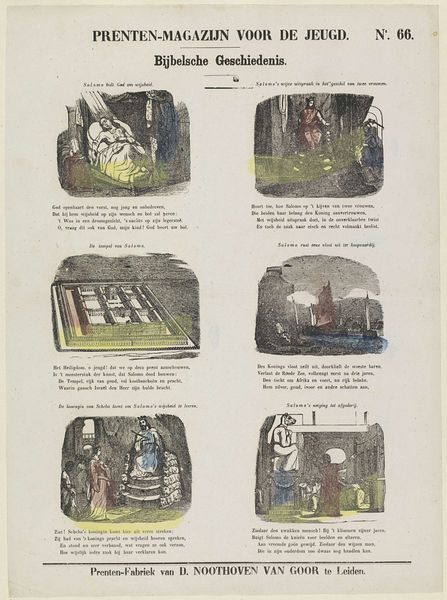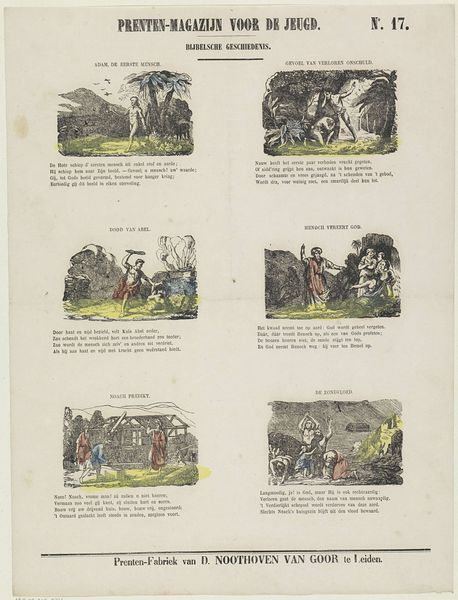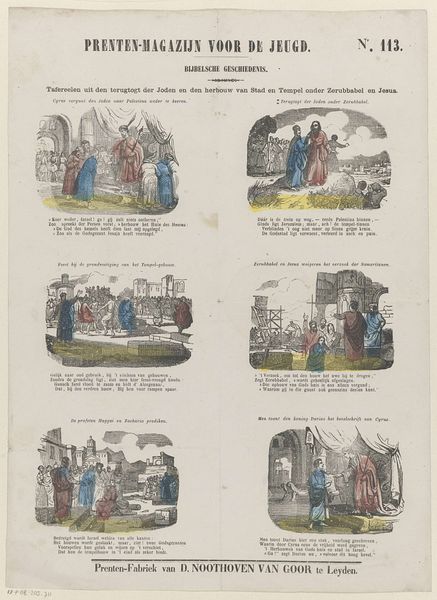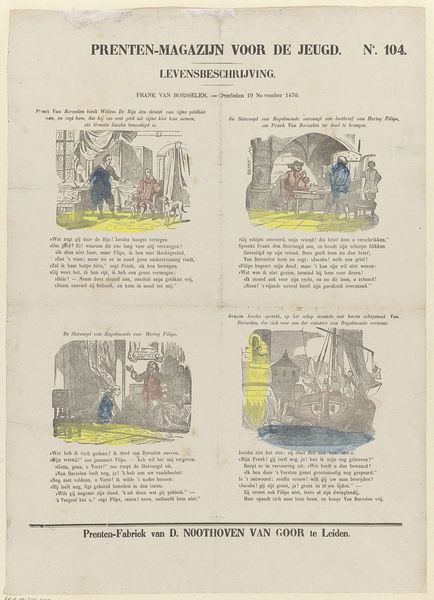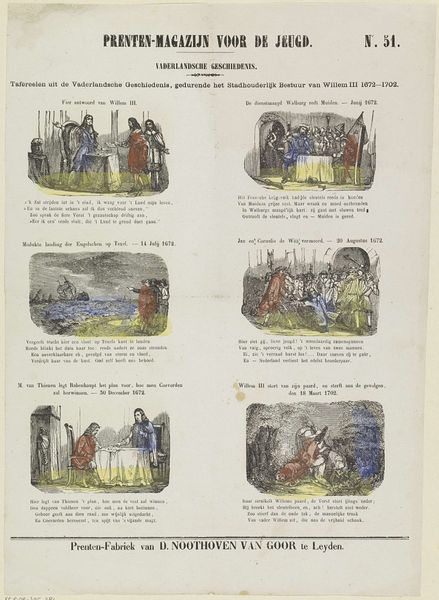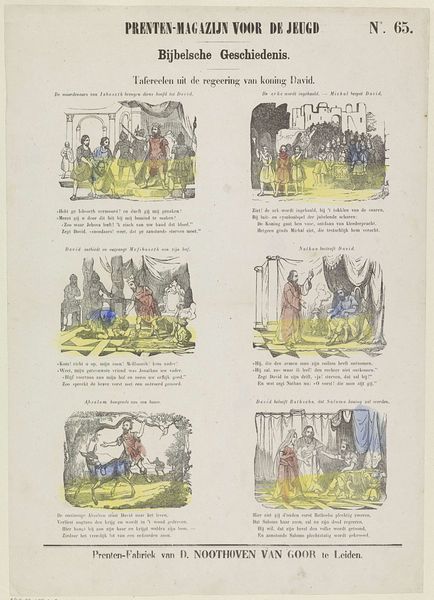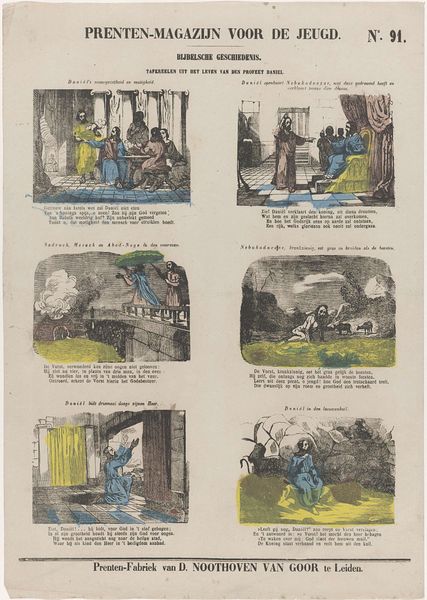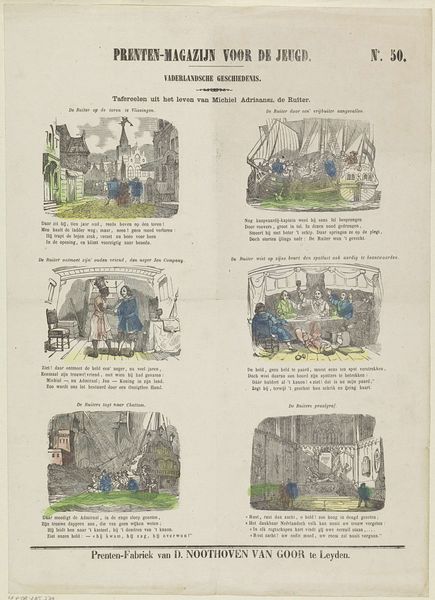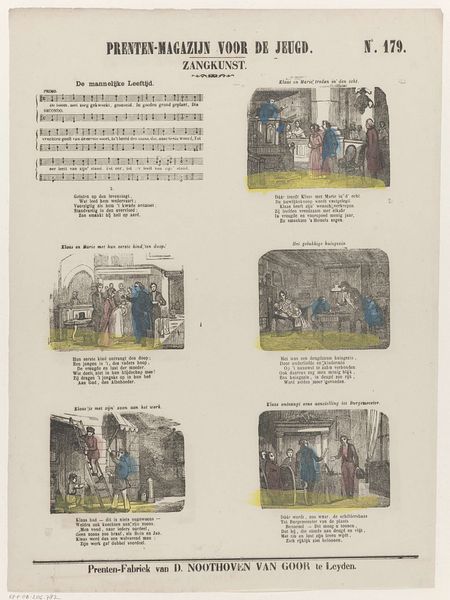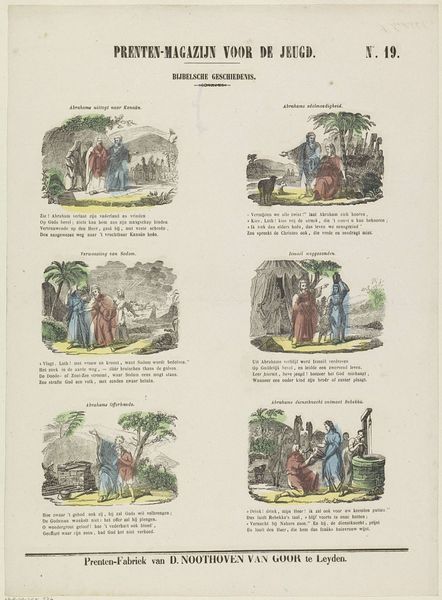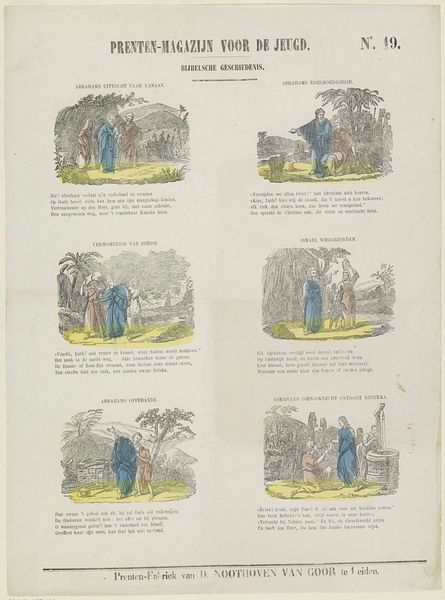
print, engraving
#
medieval
# print
#
genre-painting
#
history-painting
#
engraving
Dimensions: height 418 mm, width 303 mm
Copyright: Rijks Museum: Open Domain
Curator: Here we have "Tafereelen uit de geschiedenis van Jezus geboorte," or Scenes from the History of Jesus' Birth. Dirk Noothoven van Goor created it sometime between 1850 and 1881. It’s an engraving, so it’s a print intended for wider distribution. What’s your first impression? Editor: My first impression is that it has a medieval feel, although from a later period. There's a stark contrast between light and shadow, giving each vignette a very dramatic look. Almost like small theatrical stages for these biblical moments. Curator: Precisely. The work uses genre-painting conventions to retell well-known historical-religious events, focusing on making these stories accessible for a youthful audience as its header reads: 'Prints-Magazine for the Youth'. Each scene captures a significant moment: the Annunciation, the journey to Bethlehem, the visit of the shepherds, and other episodes. Editor: What strikes me is how these scenes were tools of religious instruction. Considering its intended audience, it speaks to how moral values were instilled. These simplified, almost cartoonish depictions likely shaped the visual literacy of many young people during that period. It prompts the question: how might the focus on an early Catholic indoctrination influence or contrast within varied cultural interpretation(s)? Curator: Good point. By situating these biblical events within familiar, accessible visuals, the printmaker ensured a wider societal and religious adherence to the faith by both familiarizing and normalizing its core teachings within a structured community. Editor: But what are the implications of presenting a single narrative in such a formatted, unquestioned manner? Especially one filled with biased Eurocentric, Christian-focused messaging? This makes it a culturally subjective artifact more than one based solely upon religious teachings, to me at least. Curator: I concur, which further reinforces how museums and historical records have their place. It's critical to think critically about our present interpretations of such cultural products that shape past perspectives when examining the artwork of such cultural material. Editor: Definitely food for thought. This seemingly innocent print reveals so much about the religious climate, distribution of visual material, and underlying social and political mechanics of its time. Thank you for the context. Curator: My pleasure, every encounter is an invitation to think further beyond its aesthetic.
Comments
No comments
Be the first to comment and join the conversation on the ultimate creative platform.
